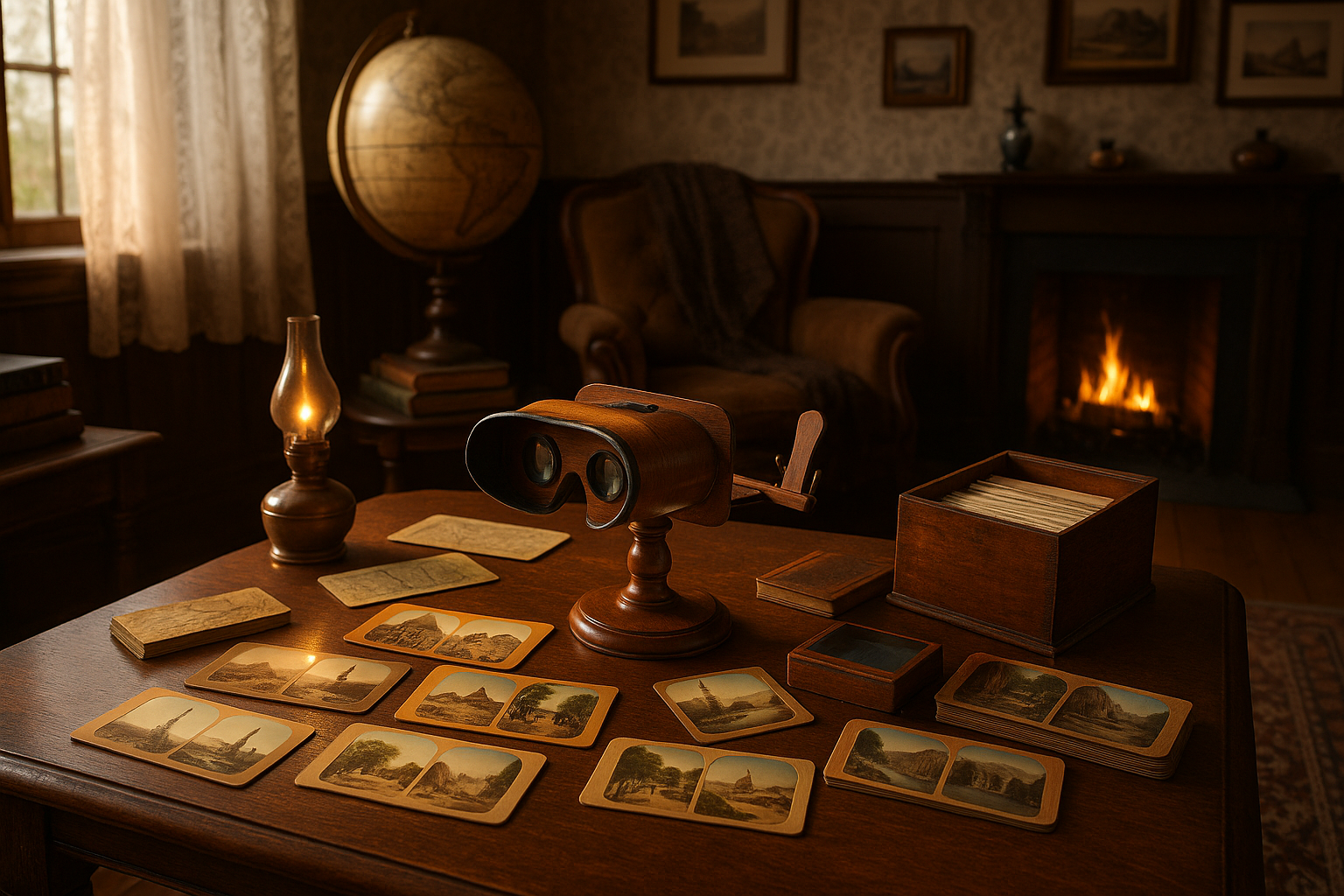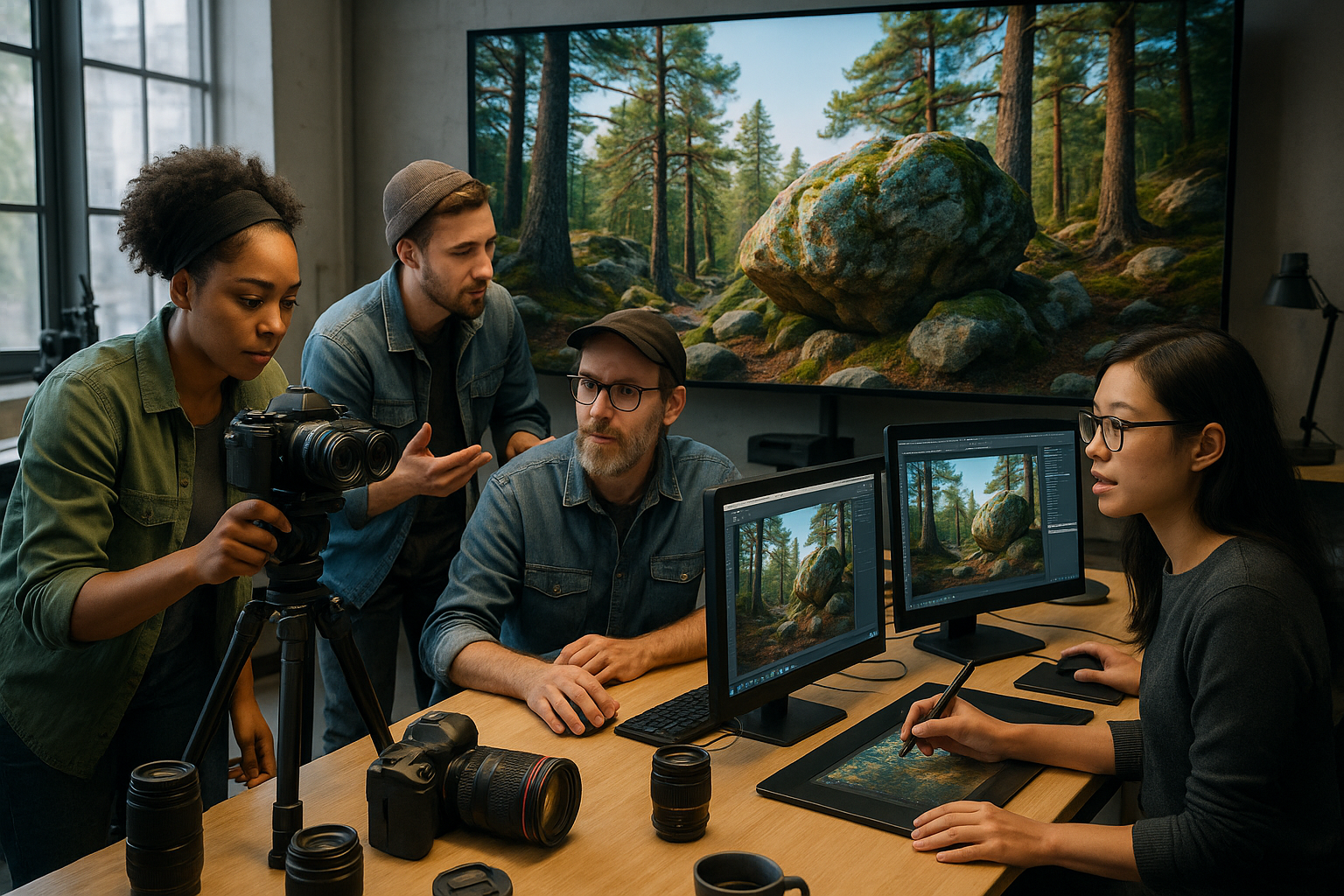In today’s fast-paced world, the way we explore and experience travel has been revolutionized, offering us unprecedented access to the beauty and wonder of our planet. Imagine being able to virtually step into any corner of the globe and see it as if you were standing right there, all without leaving the comfort of your home. Welcome to the age of 3D travel experiences, a mesmerizing blend of technology and wanderlust that allows you to embark on an epic journey across the world through stunningly immersive visuals. 🌍✨ This isn’t just about looking at pretty pictures on a screen—it’s about feeling the pulse of distant lands, hearing the whispers of ancient histories, and seeing the world in a way that was once only imaginable.
The core of this revolution is the sophisticated use of 3D technology, which has transformed the way we perceive travel. From the breathtaking landscapes of the Grand Canyon to the intricate architecture of the Taj Mahal, 3D travel experiences provide a vivid sense of place and scale that traditional media simply can’t match. This article will delve into the marvels of 3D technology and how it is being harnessed to bring the world closer to us. We will explore the technological advancements that have made this possible, the platforms offering these virtual experiences, and how travelers and enthusiasts alike are using them to enrich their understanding of the world.
Moreover, these experiences are not limited to natural wonders and architectural feats. They also offer a glimpse into the cultural tapestry of different societies. Imagine exploring the vibrant streets of Tokyo, with its neon lights and bustling crowds, or wandering through the colorful markets of Marrakech, all in 3D detail. These virtual journeys allow you to appreciate the nuances of different cultures, understand their histories, and feel the rhythm of their daily life. In this exploration, we will discuss how 3D travel is fostering a deeper connection and empathy with diverse cultures, breaking down barriers and building bridges of understanding across continents.
Of course, the benefits of 3D travel extend beyond individual enrichment. They are proving to be invaluable tools in the fields of education, conservation, and tourism. Teachers can take their students on virtual field trips to historical sites and natural habitats, enhancing learning through immersive experiences. Conservationists can use these technologies to raise awareness about endangered ecosystems and the importance of preserving our planet. Meanwhile, the tourism industry is embracing these innovations to attract visitors and showcase destinations in a whole new light. We will examine the impact of 3D travel on these sectors and explore the potential it holds for the future.
As we journey through the possibilities that 3D travel offers, this article will also address the challenges and ethical considerations involved. While the technology opens doors to new experiences, it also raises questions about accessibility, representation, and the potential for over-commercialization of cultural heritage sites. We will navigate these complex issues and consider how to ensure that this incredible tool is used responsibly and inclusively. By the end of this exploration, you will not only have a greater appreciation for the innovations driving 3D travel but also a better understanding of how it is reshaping our relationship with the world. So, prepare to embark on a journey of discovery that promises to ignite your curiosity and expand your horizons like never before. 🚀
The Evolution of 3D Travel Experiences
In recent years, technological advancements have revolutionized the way we perceive and interact with the world. Among these innovations, 3D travel experiences stand out, offering an unprecedented way to explore destinations without leaving the comfort of our homes. Initially, the concept of 3D travel was a novelty reserved for sci-fi movies, but today, it has become an accessible and popular tool for travel enthusiasts, educators, and even businesses. These immersive experiences allow users to dive into the heart of any destination, exploring every nook and cranny as if they were physically present.
The journey to these 3D travel experiences began with basic virtual tours, which offered panoramic images stitched together to provide a 360-degree view. As technology evolved, these tours became more sophisticated, integrating interactive elements and high-definition imagery. The incorporation of virtual reality (VR) and augmented reality (AR) further enhanced the depth and engagement of these experiences, making them more immersive than ever. With the rise of VR headsets and AR applications, users can now not only see but feel the atmosphere of a distant place, making the experience strikingly real.
As the demand for virtual exploration grew, platforms such as Google Earth VR, Oculus Venues, and many others emerged, providing comprehensive 3D maps and experiences that span the globe. These platforms are constantly evolving, incorporating user-generated content, and expanding their libraries to cover even the most remote corners of the earth. The result is a rich tapestry of experiences that cater to a variety of interests, whether it’s exploring the ancient ruins of Machu Picchu, wandering through the bustling streets of Tokyo, or gliding over the Serengeti plains.
Benefits of 3D Travel Views
The advantages of 3D travel experiences extend beyond mere entertainment. They offer educational opportunities, allowing students to engage with history, geography, and culture in a vivid and memorable way. Teachers can use these tools to provide context and visualizations that traditional textbooks simply cannot. For instance, a lesson about the Great Wall of China becomes more impactful when students can virtually walk along its length and observe its intricate construction and the surrounding landscapes.
Moreover, 3D travel experiences serve as an invaluable resource for travelers and planners. By exploring a destination in 3D before visiting, travelers can better plan their itineraries, identifying key sites of interest and understanding the layout of the area. This pre-visit exploration can enhance the overall travel experience, ensuring that travelers make the most of their time and resources. Check out this comprehensive video on the evolution of 3D travel technology: The Future of Virtual Travel – CNBC.
Businesses in the travel and hospitality sectors also leverage 3D views to enhance their marketing efforts. By offering virtual tours of hotels, resorts, and attractions, they can entice potential customers and provide a preview of what they can expect. This innovative approach not only attracts more visitors but also builds trust, as customers have a clear understanding of what is being offered.
How to Access 3D Travel Experiences
With the growing popularity of 3D travel experiences, accessing these tools has never been easier. There are several platforms and applications available, each offering unique features and experiences. To begin your journey into the world of 3D travel, it’s essential to choose the right platform that aligns with your interests and needs.
One of the most popular and widely used platforms is Google Earth VR. This application allows users to fly around the planet, exploring cities, landmarks, and natural wonders in stunning 3D. The platform is accessible on various devices, including VR headsets, making it a versatile option for both casual users and tech enthusiasts. Google Earth VR also offers a user-friendly interface, making it easy for anyone to navigate and explore.
Another notable platform is Oculus Venues, which provides a more social aspect to 3D travel. Users can attend live events, concerts, and sports matches in virtual reality, offering an immersive and interactive experience. This platform is ideal for those who enjoy not only exploring destinations but also experiencing events as if they were physically present. For more in-depth insights into how to access and enjoy 3D travel experiences, check out this table comparing some of the most popular platforms available:
| Platform | Features | Devices Supported |
|---|---|---|
| Google Earth VR | Global 3D maps, interactive tours, historical imagery | VR headsets, desktop |
| Oculus Venues | Live events, concerts, sports, social interaction | Oculus headsets |
| Expedia VR | Hotel and destination tours, travel planning | VR headsets, mobile |
Enhancing Your Virtual Travel Experience
To maximize the benefits of 3D travel experiences, it’s essential to prepare and optimize your setup. For an immersive experience, investing in a quality VR headset can make a significant difference. Devices such as the Oculus Rift or HTC Vive offer high-resolution displays and responsive motion tracking, providing a seamless and realistic virtual environment. Additionally, ensuring a stable internet connection and a comfortable viewing space can enhance your overall experience.
Engage with the content actively by exploring different angles, interacting with objects, and taking the time to absorb the details of each location. Many platforms offer guided tours and informative commentary, providing context and insights into the significance of various landmarks and cultural sites. Don’t hesitate to utilize these features to gain a deeper understanding of the places you explore.
For those interested in further enhancing their experience, consider joining online communities and forums dedicated to virtual travel. These communities offer a wealth of information, tips, and shared experiences from fellow enthusiasts. Whether you’re seeking recommendations for the best virtual tours or troubleshooting technical issues, these groups can provide valuable support and guidance.
Future of 3D Travel Experiences
As technology continues to advance, the future of 3D travel experiences holds exciting possibilities. Emerging technologies such as haptic feedback and eye-tracking are set to enhance the realism and interactivity of virtual environments. Haptic feedback, which provides tactile sensations, will allow users to feel textures and surfaces within the virtual world, adding a new dimension to the experience. Eye-tracking technology, on the other hand, promises to make interactions more intuitive and responsive, adapting the environment based on the user’s focus and attention.
Artificial intelligence (AI) is also playing a significant role in the evolution of 3D travel. AI algorithms can analyze user preferences and behavior to tailor experiences, offering personalized tours and recommendations. This level of customization ensures that each virtual journey is unique and caters to the individual’s interests and desires.
Furthermore, as the world becomes more interconnected, collaborative virtual experiences are expected to become more prevalent. Imagine exploring the streets of Paris or the temples of Kyoto with friends and family from around the world, all within a shared virtual space. This social aspect of 3D travel has the potential to bring people together, fostering a sense of connection and shared exploration despite physical distances.
Preparing for the Next Wave of Innovation
To stay ahead of the curve and fully embrace the future of 3D travel experiences, it’s essential to remain informed about technological advancements and industry trends. Follow reputable tech news sources, join virtual travel forums, and participate in online discussions to stay updated on the latest developments. Engaging with the community will not only enhance your knowledge but also provide opportunities to network with like-minded individuals who share your passion for virtual exploration.
In conclusion, the world of 3D travel experiences is rapidly evolving, offering limitless possibilities for exploration, education, and entertainment. By embracing these technologies and actively engaging with the virtual travel community, you can unlock new horizons and enrich your understanding of the world in ways never before possible. So, why wait? Dive into the world of 3D travel and embark on an unforgettable journey today!

Conclusion
Exploring the world in stunning 3D has truly revolutionized the way we experience travel. Throughout this article, we delved into the incredible innovations that have made virtual travel not only possible but extraordinarily immersive. From the advent of sophisticated mapping technologies to the artistic endeavors of content creators capturing the essence of destinations in three dimensions, the realm of travel has been expanded beyond traditional boundaries.
We began by examining how technology has bridged the gap between reality and the digital world. The development of high-resolution imaging and 3D modeling has allowed armchair travelers to visit far-flung places with a level of detail and realism that was unimaginable just a few years ago. Tools like Google Earth and various other platforms have democratized access to the wonders of the world, offering a unique perspective that is both educational and inspiring. These platforms are not just about visuals; they include contextual information that enriches the virtual travel experience, making it an invaluable resource for students, educators, and curious minds alike.
Additionally, we explored the impact of virtual reality (VR) on the travel industry. VR has opened new avenues for experiencing destinations that might otherwise be inaccessible due to physical, financial, or time constraints. By using VR headsets, users can immerse themselves in a 360-degree view of a location, hearing the sounds and feeling the atmosphere as if they were truly there. This technology has not only enhanced personal travel experiences but has also provided a vital tool for tourism boards and travel companies to market destinations in an innovative and compelling way.
Furthermore, the article discussed the environmental and economic implications of virtual travel. As concerns about carbon footprints and sustainable tourism grow, 3D travel experiences offer a more eco-friendly alternative to traditional travel. By reducing the need for physical travel, these technologies contribute to lowering emissions while still allowing people to satisfy their wanderlust. Economically, this shift opens up opportunities for businesses to develop and market digital content, creating jobs and new revenue streams within the tech and tourism sectors.
The importance of embracing these technological advances cannot be overstated. They represent a shift towards more sustainable and accessible ways of experiencing the world. Whether you’re a student exploring ancient civilizations for a school project, a professional doing reconnaissance for a business trip, or a travel enthusiast planning your next vacation, these tools provide invaluable insights and experiences.
In conclusion, the journey into the world of 3D travel views is just beginning. As technology continues to advance, the possibilities are boundless. The integration of augmented reality (AR), more personalized and interactive experiences, and continuous improvements in VR technology promise to make virtual travel an even more compelling option in the future. The blending of technology with human curiosity and creativity will continue to redefine our understanding of travel and exploration.
We encourage you to engage with these technologies and explore the world from your own home. Consider how you might incorporate virtual travel into your educational pursuits, business strategies, or leisure activities. The potential for learning, inspiration, and connection is immense.
If you found this exploration into 3D travel views insightful, please share your thoughts and experiences in the comments below. Share this article with friends and family who might also be intrigued by the intersection of technology and travel. And, most importantly, take what you’ve learned and explore the world with a fresh perspective, whether digitally or in person.
🌍✨ Ready to start your virtual journey? Dive into platforms like Google Earth and explore endless possibilities from the comfort of your home. Your next adventure is just a click away!
Toni Santos is a visual historian and artisan whose creative lens is captivated by the forgotten marvels of antique optical devices. Through his thoughtful storytelling, Toni revives the instruments that once transformed light into wonder—camera obscuras, magic lanterns, kaleidoscopes, and other ingenious tools that shaped our earliest visual imaginations.
His journey is rooted in a fascination with how humans have long sought to bend, reflect, and reveal the unseen. Whether tracing the mechanical poetry of 19th-century projectors or illustrating the tactile elegance of early lenses, Toni’s work invites us to see vision itself as an evolving art form.
Blending handcrafted design with historical inquiry, Toni brings to life the material soul of these devices—celebrating not just how they functioned, but what they meant. His creations and curated stories illuminate a world where science, illusion, and beauty were intricately linked through glass and brass.
As the curator of Vizovex, Toni shares detailed studies, reconstructed artifacts, and immersive content that help others rediscover the origins of visual technology and the magic of analog perception.
His work is a tribute to:
The craftsmanship behind early visual instruments
The wonder of seeing through the eyes of another century
The intersection of optics, art, and imagination
Whether you’re a collector, a designer, or someone drawn to the lost poetry of vision, Toni welcomes you into a world where light is a storyteller—one prism, one lens, one forgotten invention at a time.





